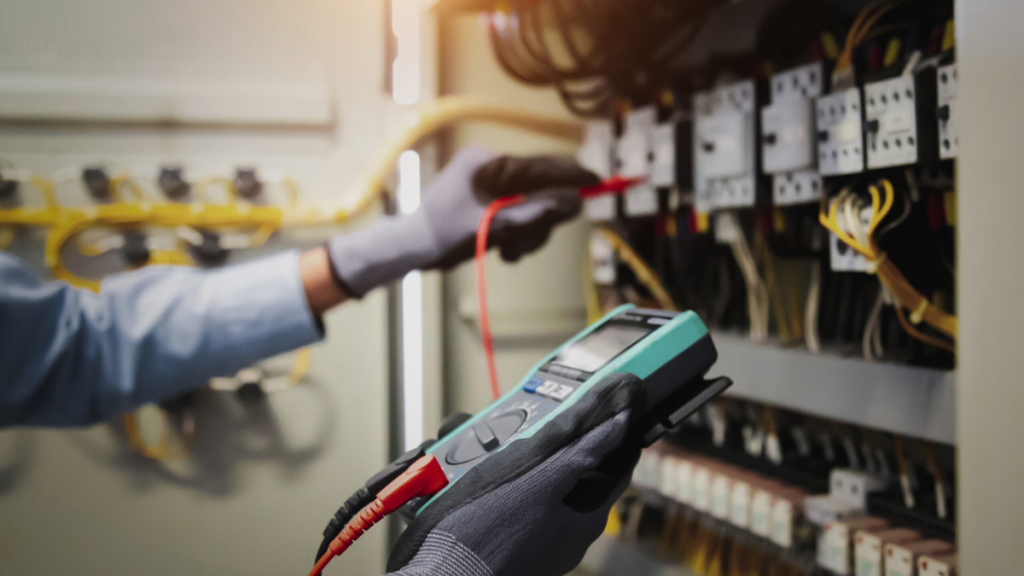Modern infrastructure relies heavily on stable and distortion-free electricity to function efficiently. As facilities become more digitised and interconnected, maintaining power quality is crucial to protect sensitive electrical equipment such as servers, HVAC systems, and automation tools.
Irregularities, such as voltage sags, harmonics, or power surges, can lead to overheating, data loss, and equipment failure, ultimately disrupting operations and increasing costs. To prevent such risks, organisations are increasingly deploying power quality solutions for energy-efficient infrastructure. These systems ensure a clean, consistent power supply, enhancing the performance and longevity of electrical devices while supporting optimal energy usage.
The Need for Power Quality in Modern Infrastructure
Contents
Today’s commercial buildings, industrial plants, and public facilities deploy a range of high-performance electrical systems that demand clean and stable power. Power quality disturbances can disrupt manufacturing processes, damage control systems, and reduce the efficiency of motors and transformers. Incorporating power quality measures not only protects this critical equipment but also leads to substantial energy savings.
Moreover, with the global shift toward energy-efficient and green-certified buildings, power monitoring has become integral to design and retrofitting strategies. Effective power quality management ensures compliance with environmental standards and contributes to sustainability targets by reducing unnecessary energy losses.
Common Power Quality Challenges and Their Impact
Frequent challenges related to power quality include voltage dips, surges, harmonic distortions, flickering, and sudden electrical transients. Such disturbances may arise from internal factors like defective wiring or excessive circuit loads, as well as external influences such as grid faults or lightning events.
- Voltage Sags and Swells: Short-term voltage drops or surges can impair electronic devices and lead to unscheduled downtimes.
- Harmonics: Non-linear loads introduce harmonic currents, distorting the waveform and increasing the likelihood of overheating in motors and transformers.
- Transients: Sudden changes in voltage, often caused by switching operations, can degrade insulation and lead to equipment failure.
All these issues underscore the importance of implementing power quality monitoring and correction systems, especially in environments that deploy multiple high-end electrical instruments.
Deploying Power Quality Solutions: Key Considerations
Integrating power quality solutions into energy-efficient infrastructure involves a comprehensive approach. This typically includes real-time monitoring, corrective devices, and preventive measures. Here are a few strategies:
- Power Conditioning Equipment: Devices such as voltage regulators, harmonic filters, and surge protectors are essential to mitigate disturbances.
- Advanced Monitoring Tools: Employing high-precision meters and sensors enables early detection of irregularities, thereby reducing downtime and maintenance costs.
- Load Management Systems: These systems help distribute electrical loads efficiently, preventing overloading and ensuring optimal energy consumption.
Careful planning and deployment of these systems ensure that infrastructure projects remain resilient, cost-effective, and energy-conscious.
Benefits of Long-Term Power Quality Management
Maintaining power quality is not a one-time effort but a continuous process that brings long-term benefits. These include:
- Extended Equipment Lifespan: Reduced stress on electrical components leads to fewer replacements and lower capital expenditures.
- Operational Efficiency: Fewer interruptions and smoother operations translate to higher productivity and lower operational costs.
- Regulatory Compliance: Adhering to power quality standards helps organisations meet energy efficiency and environmental regulations.
Enhance System Efficiency with Support from Leading Electrical Brands
When it comes to deploying power quality solutions for energy-efficient infrastructure, the quality and reliability of equipment play a pivotal role. Collaborating with established and reputable electrical brands ensures access to certified, high-performance devices and expert support. These brands offer not only advanced technologies but also robust after-sales services, system integration support, and long-term maintenance solutions.
As the demand for smarter, greener infrastructure continues to grow, focusing on power quality becomes indispensable. By integrating effective power management strategies and aligning with experienced electrical solution providers, organisations can build infrastructure that is not only energy-efficient but also future-ready.

